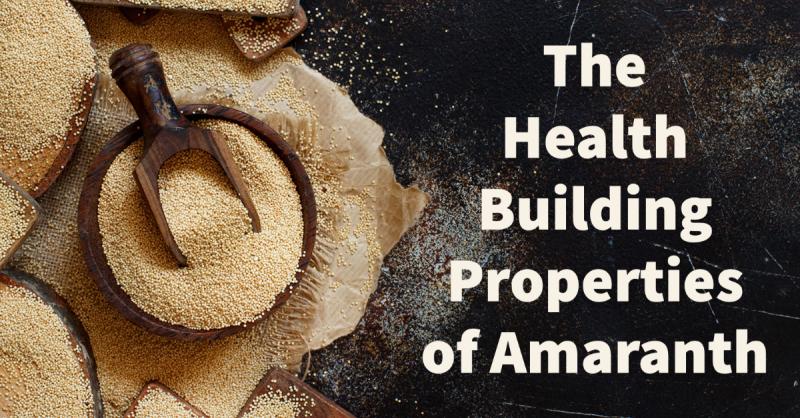
Last week I wrote about the Chenopodium genus, quinoa, epazote, and goosefoots. This week, I’ll cover a closely related genus of plants, Amaranthus, the genus for amaranth. Like quinoa, amaranth is a pseudo-grain, a seed used as a grain that is not part of the grass family. And also like quinoa, it was grown by Native Americans in Central and South America and has gained popularity as a healthy, gluten-free alternative.
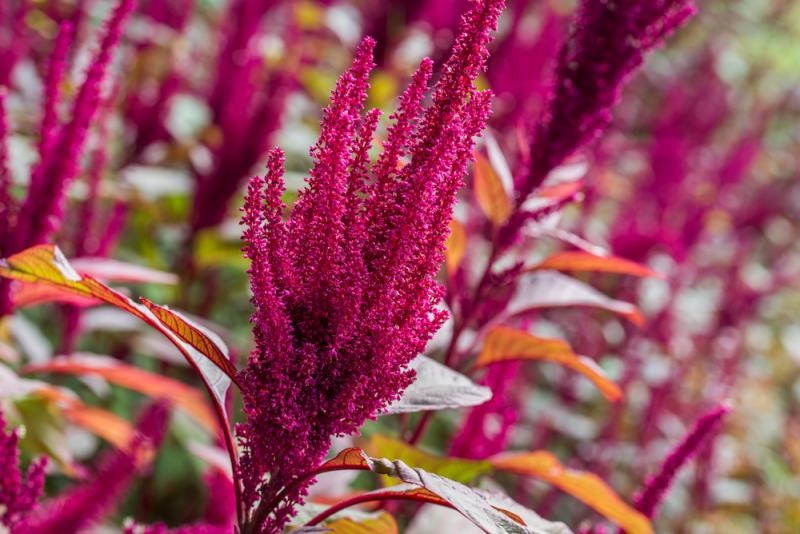 A common species grown for the seeds is Mexican amaranth, Amaranthus cruentus. Amaranth seeds can be ground into flour, popped like popcorn, or cooked into a porridge. The young greens are also edible and I discovered in researching for this article that the seeds also make good sprouts, something I’m going to have to try.
A common species grown for the seeds is Mexican amaranth, Amaranthus cruentus. Amaranth seeds can be ground into flour, popped like popcorn, or cooked into a porridge. The young greens are also edible and I discovered in researching for this article that the seeds also make good sprouts, something I’m going to have to try.
Besides being a gluten-free grain alternative, amaranth is a source of protein, good fats, and minerals like manganese, magnesium, and iron. It also contains antioxidants, which are higher in the raw grain than the cooked grain. Research also suggests that eating it may reduce inflammation and help to manage cholesterol levels.
There are many other species of amaranth that have been used as food. Daniel E Moerman lists 12 species in his book Native American Ethnobotany, but there are around 70 in total.
Redroot Pigweed
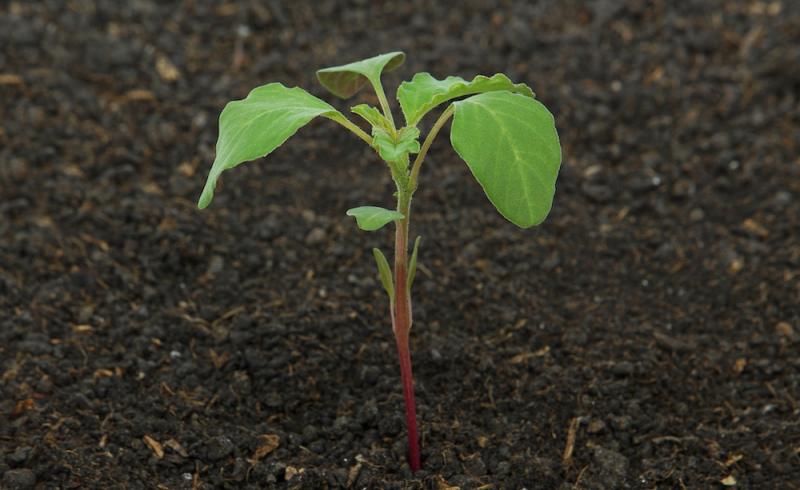 The species of amaranth I’m most familiar with is Amaranthus retroflex, commonly known as redroot or pigweed. I’ve often found it in my garden growing along with lamb’s quarters, which is also called pigweed or white goosefoot. Like lamb’s quarters, redroot makes is a nice green vegetable you can harvest and eat, either in a salad or cooked like spinach.
The species of amaranth I’m most familiar with is Amaranthus retroflex, commonly known as redroot or pigweed. I’ve often found it in my garden growing along with lamb’s quarters, which is also called pigweed or white goosefoot. Like lamb’s quarters, redroot makes is a nice green vegetable you can harvest and eat, either in a salad or cooked like spinach.
Like other amaranths, the seeds can also be harvested and used as a grain alternative. You can grind them up for flour or cook them. They are so small that chewing them would leave the hulls intact and so it is probable that many will just pass through your digestive tract.
Medicinal Uses of Amaranth
In Medicinal Plants of the Mountain West, Michael Moore discusses using various amaranth species as medicine. He claims, “The upright Amaranths are the more useful medicinally, and the redder the stems the stronger the effects,” which means redroot would be one of the medicinal species. He says that a strong tea of the dried leaves is good as a tonic for the gastrointestinal system, having a mild astringent effect. The tea can also be used as a douche for vaginal irritation. The fresh leaves can be used as a poultice for skin irritation.
The small seeds of many species also have medicinal use. If not ground or processed to remove the hull, the seeds pass through the digestive tract whole. You can soak the seeds in water until they swell a little from the mucilage they contain and then drink the water and seeds as an alternative to psyllium, flax, or chia seeds for mucilaginous fiber.
Love-Lies-Bleeding
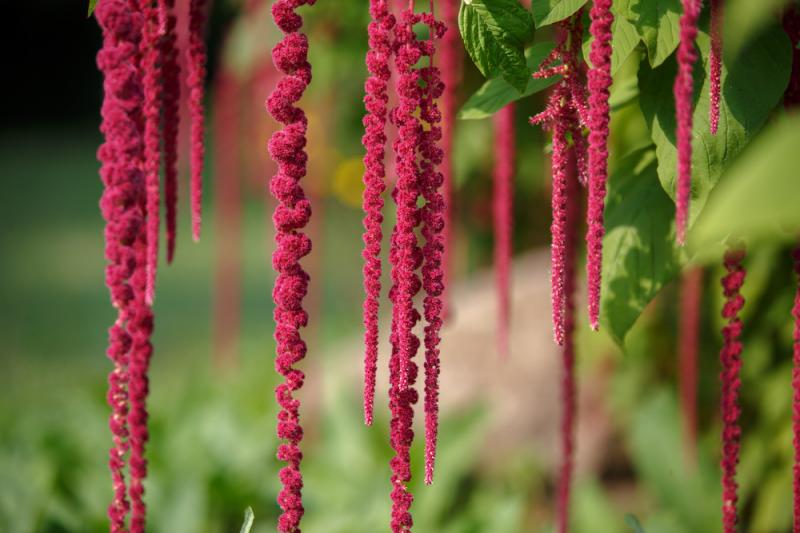 Another species of amaranth is love-lies-bleeding, A. caudates. This is a flower essence from FES Services that I’ve used a lot. The common name really fits the emotional state this flower essence addresses. The person’s heart (the home of love) lies bleeding from wounds it has received to the point that the person is in anguish of soul. This person is suffering from deep, inner emotional pain, physical ailment that feels like torment, or severe mental anguish.
Another species of amaranth is love-lies-bleeding, A. caudates. This is a flower essence from FES Services that I’ve used a lot. The common name really fits the emotional state this flower essence addresses. The person’s heart (the home of love) lies bleeding from wounds it has received to the point that the person is in anguish of soul. This person is suffering from deep, inner emotional pain, physical ailment that feels like torment, or severe mental anguish.
The torment they feel is increased by the fact that they believe they are alone in their suffering. They may even feel like no one could possibly understand their suffering and that perhaps no one has experienced the pain they are experiencing. They may be depressed or withdrawn from others as a result.
Suffering as a Path to Spiritual Growth
The escape from this suffering is to realize that they are not alone, There are others who suffer as they are suffering. And, realizing this, their suffering can allow them to develop compassion for others and the ability to sacrifice, like Christ, to help ease others of their suffering. In this process, they find a larger transpersonal meaning to their suffering. As Victor Frankl wrote about in his book, Man’s Search for Meaning, a person can endure almost anything if they can find a sense of purpose or meaning in it. That’s what love-lies-bleeding does, it helps a person find purpose and meaning in their suffering so that they rise above it, allowing it to increase their capacity for love, compassion, and sacrifice for and service to others.
More Amaranth Species
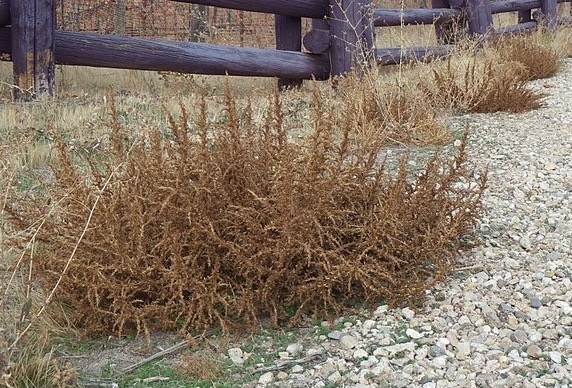 If you look around you’ll probably find other Amaranthus species growing wild where you live. In fact, many are considered invasive weeds. The book, Weeds of the West, lists two other species besides redroot as invasive weeds that can be found in most of North America. These include tumble pigweed (A. albus) which is an obnoxious tumbleweed that constantly invaded my yard when I lived in Leeds, Utah.
If you look around you’ll probably find other Amaranthus species growing wild where you live. In fact, many are considered invasive weeds. The book, Weeds of the West, lists two other species besides redroot as invasive weeds that can be found in most of North America. These include tumble pigweed (A. albus) which is an obnoxious tumbleweed that constantly invaded my yard when I lived in Leeds, Utah.
Another weed species is prostrate pigweed (A. blitoides). I’ve also seen this growing as a weed in my yard. Both species were used as a food source by Native Americans, so maybe I should try harvesting them for food instead of just uprooting them while weeding.
There are many species of amaranths that you could grow in a garden, either for their flowers or as food. They don’t need rich soil or very much water, so they’re fairly easy to grow and many, like love-lies-bleeding, have beautiful flowers. I hope this article has encouraged you to make better use of this valuable genus of plants.
Downloads
Steven's Articles
-

-
The Health Benefits and Problems with Coffee
This popular caffeinated beverage can be beneficial…
October
-

-
Understanding Caffeine & Cellular Adaptation
Preserving the power of caffeine's buzz and the…
September
-

-
Horseradish
A pungent spice for aiding protein metabolism…
-

-
Banaba or Crepe Myrtle
A beautiful tree from Southeast Asia whose leaves…
August
-

-
Monkeyflowers
Flower essences to help see ourselves more clearly…
-

-
Mariposa Lilies
Strengthening the bond between mother and child…
-

-
The Noble Bay Leaf
A common kitchen herb for aiding digestion and…
-

-
Epimedium: Horny Goat Weed
A circulatory stimulant and kidney yang tonic…
July
-

-
The Medicinal and Nutritional Benefits of Apricots
A nutritious fruit and valuable medicinal seed for coughs
-

-
Dogwoods
Asian dogwood is used to stop excessive discharge,…
June
-

-
Neem: The Village Pharmacy
A popular Ayurvedic remedy for dental and immune…
-

-
Spilanthes: The Toothache Plant
A traditional remedy for teeth and gums, as well…
-

-
Forsythia
An anti-inflammatory, fever-reducing, and infection fighting herb
May
-

-
Buckwheat (Kashi)
A delicious, high protein, gluten-free, gut-healthy food
-

-
Leaky Gut Syndrome
Plugging the leaks on the underlying cause of…

